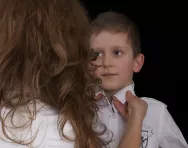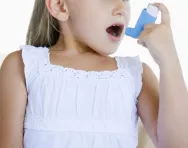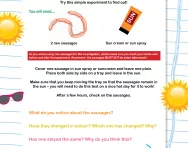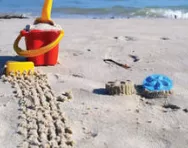Important update from TheSchoolRun
For the past 13 years, TheSchoolRun has been run by a small team of mums working from home, dedicated to providing quality educational resources to primary school parents. Unfortunately, rising supplier costs and falling revenue have made it impossible for us to continue operating, and we’ve had to make the difficult decision to close. The good news: We’ve arranged for another educational provider to take over many of our resources. These will be hosted on a new portal, where the content will be updated and expanded to support your child’s learning.
What this means for subscribers:
- Your subscription is still active, and for now, you can keep using the website as normal — just log in with your usual details to access all our articles and resources*.
- In a few months, all resources will move to the new portal. You’ll continue to have access there until your subscription ends. We’ll send you full details nearer the time.
- As a thank you for your support, we’ll also be sending you 16 primary school eBooks (worth £108.84) to download and keep.
A few changes to be aware of:
- The Learning Journey weekly email has ended, but your child’s plan will still be updated on your dashboard each Monday. Just log in to see the recommended worksheets.
- The 11+ weekly emails have now ended. We sent you all the remaining emails in the series at the end of March — please check your inbox (and spam folder) if you haven’t seen them. You can also follow the full programme here: 11+ Learning Journey.
If you have any questions, please contact us at [email protected]. Thank you for being part of our journey it’s been a privilege to support your family’s learning.
*If you need to reset your password, it will still work as usual. Please check your spam folder if the reset email doesn’t appear in your inbox.
Hay fever in school-age children
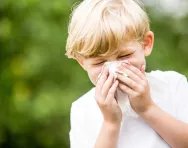
The spring and summer months should be great fun for primary school kids, with lots of opportunities for outdoor learning and play. But children with hay fever can find this time of year difficult; their symptoms can make them uncomfortable and even affect their academic achievement.


Boost Your Child's English & Maths!
- Weekly programme for each school year
- Worksheets sent direct to your inbox
- Keeps your child's learning on track
‘Hay fever is very common amongst children, especially because they tend to be outdoors a lot and exposed to pollen,’ explains Amena Warner, head of clinical services at Allergy UK. ‘Pollen allergies have tripled over the past three decades, and we’re seeing a lot more children becoming sensitised to pollen.’
What causes hay fever?
Hay fever is an allergic reaction to pollen, and often begins in childhood. There are three types of pollen that can trigger symptoms: grass pollen, tree pollen and weed pollen. Children may be allergic to one or more types.
‘Children who come from a family where there’s a history of allergies or asthma are predisposed to allergies and may be more likely to have hay fever,’ explains Amena. ‘They can also become sensitised to pollen if they have a lot of contact with it, which often applies to children who spend a lot of time running around the park or school playing field.’
The pollen season typically starts in late March, when tree pollen is most prevalent. From mid May to July, grass pollen is the biggest problem, and weed pollen causes symptoms from late June till September. However, the pollen season can begin as early as January and can continue until November, depending on the weather.
Hay fever symptoms are often worse after rain, which waters the grass and prompts it to release pollen. And, perhaps surprisingly, children in urban areas can be particularly badly affected, as pollution from diesel fumes exacerbates the effects of pollen. Indeed, studies have identified 800 London schools, nurseries and colleges where pupils are exposed to higher than permissible pollution levels.
The symptoms of hay fever
The typical symptoms of hay fever include:
- Runny or blocked nose
- Sneezing
- Itchy, red or watery eyes
- Itchy throat, mouth, nose and ears
- Coughing or tightness in the chest
Hay fever is sometimes mistaken for a summer cold, but the tell-tale symptom is itching. ‘This suggests hay fever rather than a virus,’ says Amena. ‘Also, the discharge from the nose is clear and watery with hay fever, rather than green or yellow, as it is with a cold.’
Treatments for hay fever
It’s important that your child is correctly treated if they have hay fever. Their symptoms may affect their academic work: research shows that pupils with uncontrolled hay fever typically achieve a grade lower than expected in summer exams, and while primary school exams are less crucial than the GCSEs and A levels your child will eventually sit, their performance could still be hampered by their symptoms: a particular concern for children in Year 6 who are taking SATs.
‘We also know that if hay fever is uncontrolled and untreated over a two- to three-year period, children are at greater risk of developing asthma,’ adds Amena.
Many hay fever remedies, including those that are suitable for children, are available over the counter. Your pharmacist can advise you on the best course of treatment for your child. This could be:
- Antihistamine medication, available as tablets, syrup, nasal sprays and eye drops, to be taken regularly as a preventative treatment, or as and when symptoms flare up.
- Corticosteroid nasal spray or drops, which treat nasal and eye symptoms.
- Saline nasal rinses which flush pollen out from the nose.
- Nasal decongestants to relieve a blocked nose.
- Eye drops to relieve inflammation and itching.
There are also various herbal and homeopathic remedies that claim to be effective for hay fever, but bear in mind that just because a treatment is natural, it’s not automatically safe: always check with your pharmacist before using them for your child.
Although many remedies are available without a prescription, Amena advises taking your child to the GP if they have hay fever symptoms. ‘Some over-the-counter treatments can cause drowsiness, which can affect your child at school,’ she explains. ‘Your GP can prescribe the best long-acting, non-sedating medication so it doesn’t interfere with their learning.’
It’s particularly important for your child to see their GP if they have eye symptoms such as redness or swelling. Children are prone to rubbing their eyes, which can cause infection, so this symptom needs proper treatment. ‘If your child’s allergies are severe, it’s also worth asking your GP to refer them to an allergy clinic for more specialised treatment,’ Amena adds.
Helping your child with hay fever symptoms
Alongside giving your child hay fever medications, there are other steps you can take to reduce their discomfort.
Check the pollen forecast every morning. If it’s high, keep the windows shut and minimise the time your child spends outside.
Change their clothes after school. Pollen clings to clothing, so encourage your child to change out of their uniform into clean clothes after school, and make sure they wear a freshly washed uniform every morning.
Encourage daily bathing or showering. If your child goes to bed without a bath or shower, they will transfer pollen from their hair and body to their bedding, which can exacerbate their symptoms.
Discourage nose-picking and eye-rubbing. It’s easy for children to spread bacteria from their nose to their eyes, causing infection.
Buy them a pair of sunglasses. They will act as a barrier to stop pollen getting into the eyes; a wraparound style is best as these cover the side of the face, too.
How schools can help children with hay fever
If your child is affected by hay fever, speak to their teacher. Although they may not be able to cancel outdoor activities, they may, for example, be willing to minimise time spent outside on days with a high pollen count.
If your child needs to be given hay fever medication during the day, you’ll need to fill in a form giving details of the medicine, the dose, when it should be taken and whether they can take it themselves or need a teacher to give it to them. Schools are also now allowed to keep an emergency salbutamol inhaler (used for asthma symptoms) at school for worst-case scenarios.
Other things your child’s school can do to help with their hay fever include:
- Encouraging them to wash their hands after playing outside to get rid of pollen.
- Keeping classroom windows shut, or if they need to be open, seating children with hay fever well away from the windows.
- Allowing children to stay in at breaktime if their symptoms are particularly bad, although this should be a last resort, as outdoor play is an important part of the school day.
